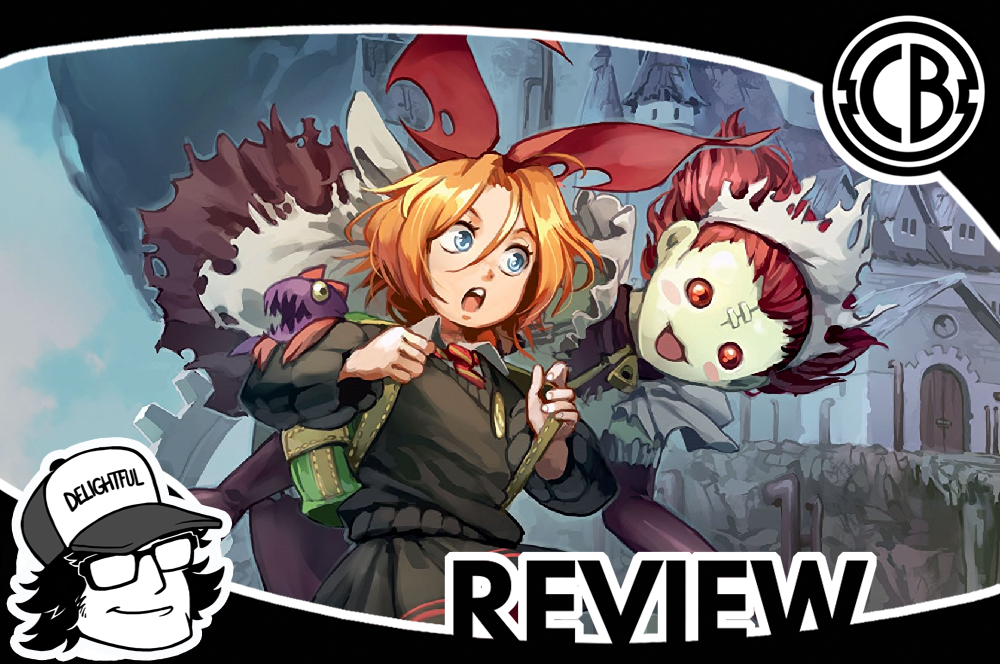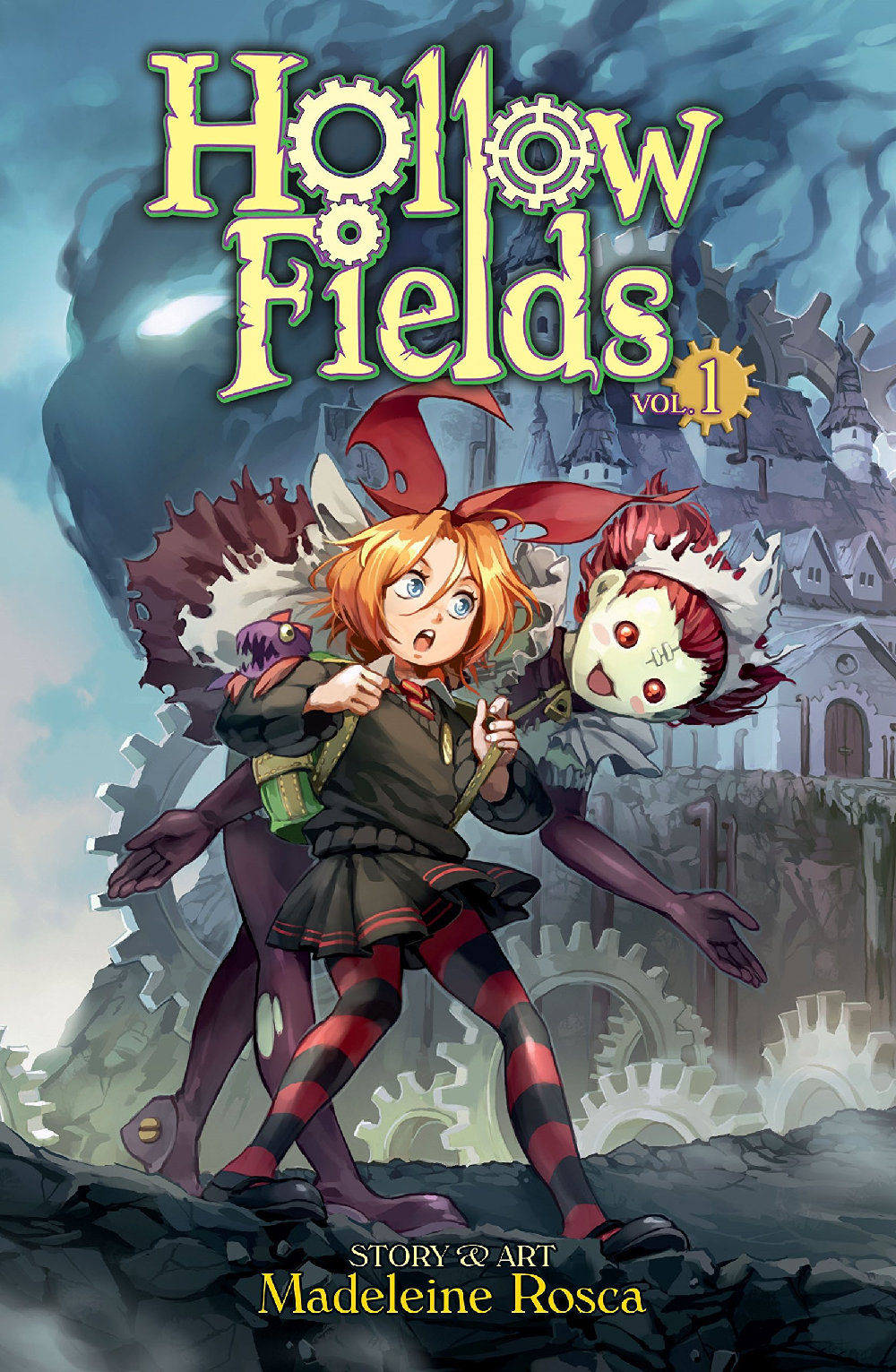Review: Hollow Fields vol. 1
By Jonathan Edwards
As it turns out, Hollow Fields Vol. 1 was originally published in June of 2007 and black & white. Cut to roughly and a half years later, and Seven Seas Entertainment has opted to re-release this full-color version. I can’t say I’ve heard of that being a particularly common practice, at least in terms of the traditional manga publishing industry. However, Hollow Fields is not a part of the traditional industry. It’s an “original English-language” manga. And in this case, that means the writer and artist is Australian. I know some people have a huge issue with manga produced outside of Japan by people who aren’t Japanese, but I’m not really one of them. Sure, you’re inherently going to get some stylistic changes thanks to cultural differences, but if the general themes and tropes are congruent, then why should overseas works be excluded? Especially when there are people who dismiss any and all Japanese animation solely on the premise that they “don’t like anime.” This is despite the fact you might be trying to get them to watch Spirited Away, and all they’re familiar with is the likes of Bleach.
Now, truth be told, I haven’t actively read manga for a long time. Not that there’s a particular reason for why. I think it might’ve simply been that I got to a point where no series were really standing out to me, so I wasn’t reading anything, and I just sort of fell out of the habit. Although, I have intermittently attempted to start back up over the last few years. Most recently, I read the first volume of Black Clover earlier this year. It was great, and I fully intend to go back for more (read: I bought the second volume months ago, and I really need to actually sit down and read it). Before that, I dabbled in a bit of Food Wars, and I managed to stumble across and read the first two volumes of Attack on Titan before the anime adaptation aired. Side note: as far as I’m concerned, Attack on Titan is an interesting enough idea with a less than satisfying execution, and all the anime did was draw things out unnecessarily, add a grossly saturated color palette, and try way too hard with its action scenes, leading to one of the most overhyped anime series in recent memory. But, I digress.
Hollow Fields is the story of Lucy Snow, a nine-and-a-half-year-old girl who, while taking a shortcut in search of Saint Galbat’s Academy for Young Ladies, winds up at a very different boarding school: the eponymous Hollow Fields. There, students study the dark sciences, from cross-species transplantation to Basic Killer Robot Construction. But, Lucy only learns that after signing the admission contract. What’s more, students aren’t allowed to leave campus until after they graduate. And if their grades slip too low by the end of each week, they get sent to detention in the old windmill, where they never return from.
Admittedly, this first volume does have a bit of a slow start. Although, by the end of its fourth and final chapter, the characterization, worldbuilding, tone, etc. have all been well enough established for it to be fairly clear what type of direction the subsequent volumes will take the story in and if you’ll be into it. So, in that regard, I’d call Hollow Fields Vol. 1 an overall success. More specifically, I find the way Rosca juxtaposes the sometimes quite dark subject matter with the book’s general lightheartedness to be one of its greater strengths. It reflects the innocence of our child protagonist but also makes sense in the context of the teachers and other students, as they did with the macabre so frequently that it’s not as big a deal to them, and they presume Lucy is the same way. Plus, it helps the more important and serious plot beats, like when Lucy finally steels her resolve, land with more weight.
Though some Japanese influence is definitely apparent, Rosca’s art here is undoubtedly more Western-based. And, that’s not a bad thing. In fact, I’d say it’s much better than if she’d spent a whole bunch of extra time and effort to needlessly mimic a Japanese artist’s work. Because, at that point, such a reproduction would end up feeling overly technical and lifeless, plus it would be less honest to her own aesthetic sensibilities. But, once again, that’s not the case here. As far as character designs go, the kids are all pretty simple, but they work. Lucy is set apart not just by the large ribbon in her hair, but also by being the only one to wear striped stockings. It’s those small and subtle details that go a long way in keeping your characters memorable. That being said, the standout designs are without a doubt the Engineers. It seems like there are essentially two primary ways to groups. Each of their appearances is unique to their role within the faculty of Hollow Fields, but they share a number of unifying elements as well. Finally, there’s the color, AKA the whole reason for this new edition. But to be honest, it’s only okay. Don’t get me wrong, the coloring on the Engineers look pretty good, and the rest does get the job done. Unfortunately, it just doesn’t do it in a, particularly interesting way.
In the end, Hollow Fields Vol. 1 is an enjoyable read that makes some good clean fun out of some normally morbid subject matter. I might even go and check out the second volume. If you’re interested in the series, you can probably find the original volumes or the omnibus collection on Amazon, or you can wait for this version to come out. If you choose the former option, then you will be missing the color. But, it didn’t have color when it was first published, so really don’t need it in order to get the most out of this reading experience.
Score: 4/5
Hollow Fields vol. 1 (Colored Version)
Seven Seas Entertainment


